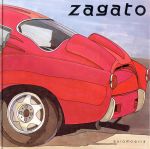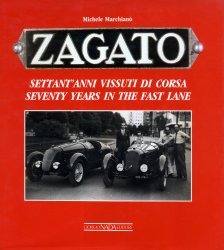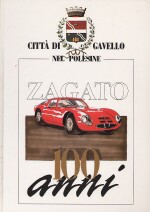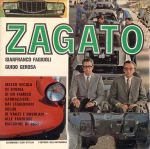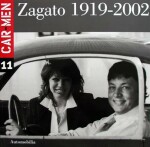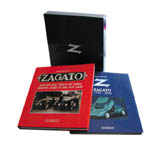ZAGATO CENTO
A journey in time and space through authentic examples of automotive beauty. This, in short, the volume Zagato Cento, published in 2020, and made to celebrate the centenary of Carrozzeria Zagato.
Founded in Milan in 1919 by its founder Ugo, a coachbuilder who wanted to apply the aeronautical technology he had learnt during the Great War to the automobile field, in fact the first work realised by the new company was a bodywork inspired by the cockpit of an aircraft for a Fiat 501.
It was the beginning of that incessant search for 'necessary beauty' that inspired the founder and those who succeeded him at the head of the company for a century. And leafing through the book is a bit like attending a fashion show, where on the catwalk the models are some of the most beautiful cars the world has ever seen.
A beauty that was essentially timeless but which also adapted to changing times and tastes, mixed with the essentiality and functionality typical of that Italian design still in its early days, but which a few decades later would blow up and impose in every industrial sector.
Ugo Zagato got rid of wood already in the early 1920s, replacing it with steel and aluminium. The first successful models that saw the light in the workshop in Viale Brianza, where the company was then based, arrived in just a few years with the Alfa Romeo 6C 1500 of '29, the 6C 1750 Gran Sport of '32 and the Spyder 8 C.
Since then, there have been dozens of special versions of production cars not only from Italian but also foreign brands, in particular Aston Martin. The definitive success came with the Gran Turismos of the 1950s - Fiat 8V, Ferrari 250, Maserati A6G and Aston Martin DB4 - followed by the furoriserie era, when engineers were gradually being replaced by car designers.
Zagato's turning point came in the 80s. To follow the evolution of the car industry, it was reorganised into two divisions still active today, the Atelier Contemporary and Classic.
Initially, the Alfa S.Z and R.Z to finish with the IsoRivolta GTZ and Alfa 8C Aerodinamica, perhaps the most exciting for their almost classical styling. In the middle are the BMW Roadster and Coupé, Porsche Carrera and Bentley Continental, to name only a few.
Text in English.
Product specification
Additional information
Write a Review
Login or Register to write your review
You might also like
- Publisher: Automobilia
- Language: English, Italian
- Binding : In hardback
- Publisher: Giorgio Nada
- Language: English, Italian
- Binding : In hardback
- Publisher: Zagato
- Language: Italian
- Binding : In hardback
- Publisher: Libreria dell' Automobile
- Language: English, Italian
- Binding : In hardback
- Publisher: L'editrice Dell'automobile
- Language: Italian
- Binding : In hardback
- Publisher: Automobilia
- Language: English, French, Italian
- Binding : In paperback
- Publisher: Giorgio Nada
- Language: English, Italian
- Binding : Hardback with slipcase





